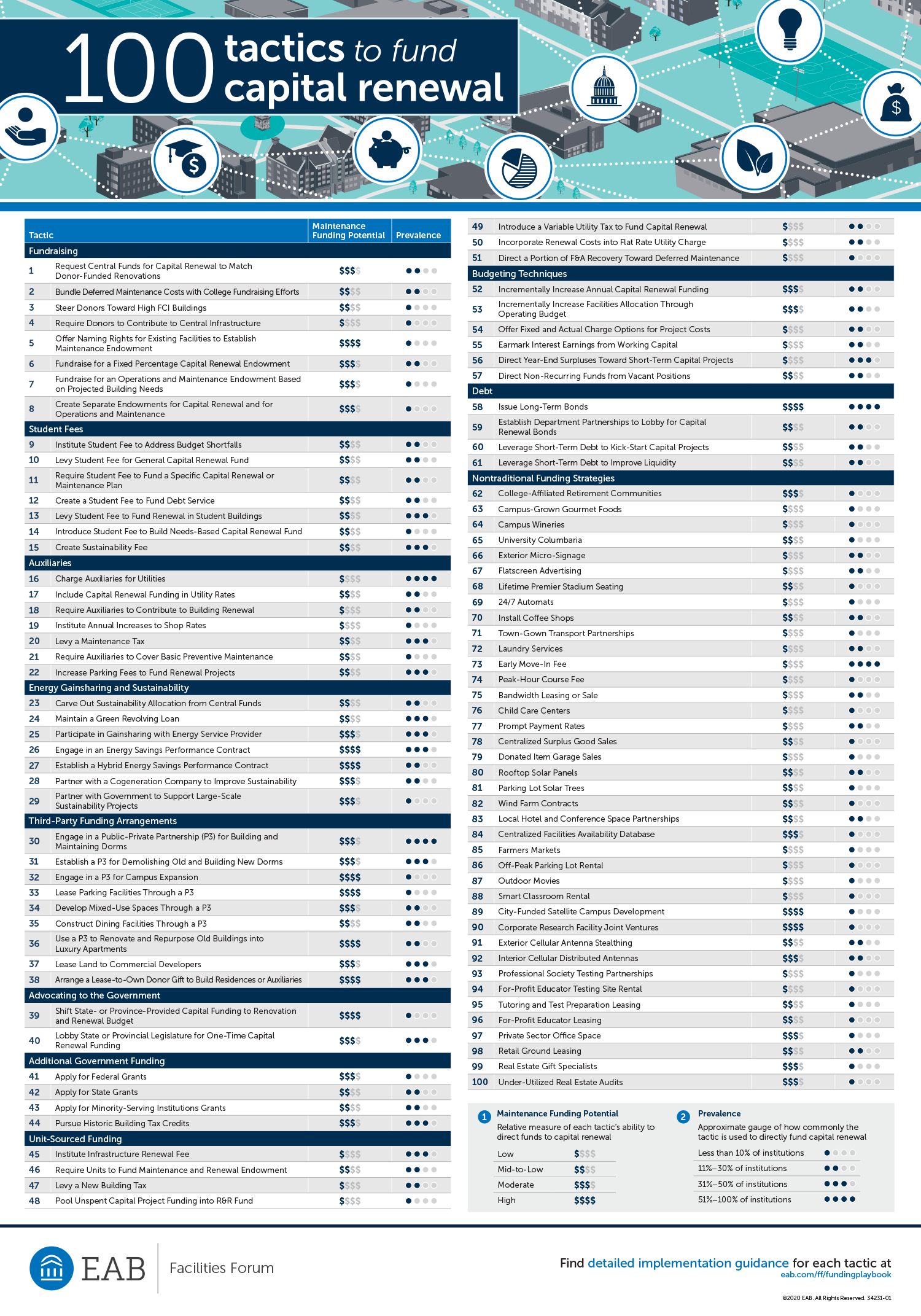The deferred maintenance backlog is a huge (and growing) problem almost all campuses face. Capital renewal funding to address deferred maintenance is often inadequate, as other institutional priorities compete for increasingly limited resources. Other institutional priorities frequently supersede capital needs, requiring Facilities leaders to seek out new ways to fund projects. This has led to campuses experimenting with funding strategies ranging from student fees to energy gain-sharing to public-private partnerships.
Institutions have a nearly unlimited number of capital projects they could complete. However, given limited resources, the capital plan must prioritize the most important ones. While critical for modernizing campus for functional and aesthetic reasons, the process for determining which capital projects are funded—and which are not—is complex and politically fraught.
Given the magnitude and pervasiveness of the deferred maintenance backlog, institutions are searching for new ways to obtain more dollars for renewal. While there are no silver bullets for tackling a large backlog, Facilities leaders can learn from colleges and universities that have used creative tactics to successfully fund capital renewal projects.
Our infographic breaks down 100 successful capital renewal funding strategies, providing a wide array of funding opportunities. Download to learn more about these creative strategies, including each tactic’s ability to generate funds and the prevalence of the tactic among other institutions.
More Resources

Capital Project Planning Toolkit

Navigating Public-Private Partnerships

